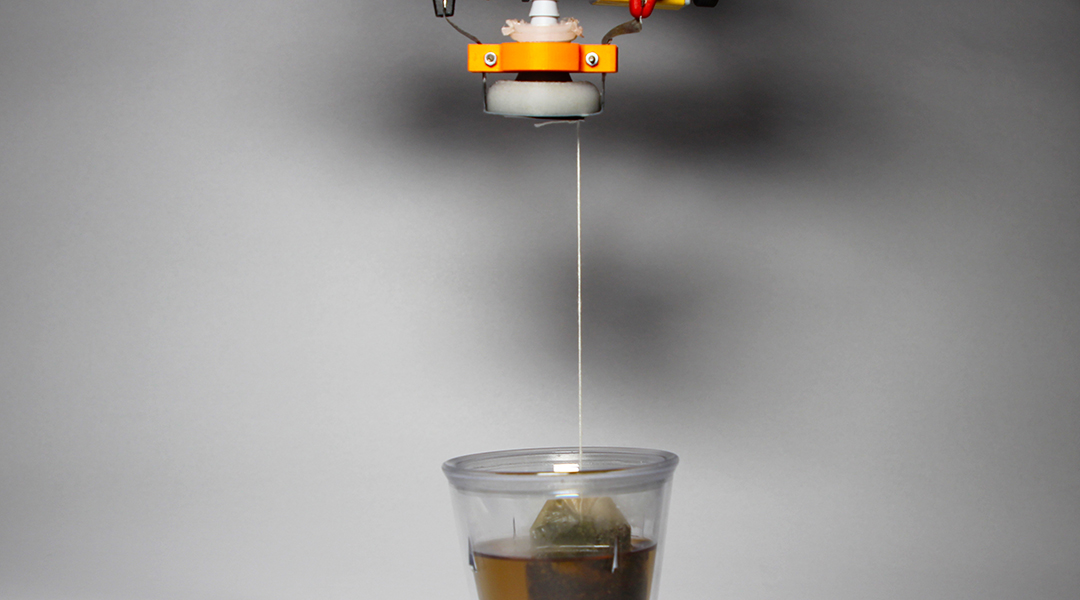The field of robotics is exploding, and robots are finding application everywhere, from medicine and space exploration to some of the more mundane household tasks, such as vacuum cleaning or lawn mowing.
But this is just the start and in future, scientists envision that robotic helpers will become more fully integrated into our daily lives, even handling a larger range of household activities to help make life easier and more accessible for a number of people.
To achieve this, scientists need to develop robots that can interact safely with humans and their surroundings. Imagine a rigid, bumbling robot tramping through your home. In addition to potentially damaging the interior, the robot could cause injury if not built or configured properly for this type of environment. This is where the field of soft robotics comes in, with robots made from flexible and soft components can be built to thrive in such delicate environments.
In an article recently published in the journal Advanced Intelligent Systems, researchers from the École Polytechnique Fédérale de Lausanne, North Carolina State University, and the University of Electro-Communications in Tokyo have sought to build a new soft gripper that can grasp a diverse range of items by combining two different physical principles: granular jamming and electrostatic attraction.
A new take on robotic “hands”
The optimal robotic hand or gripper does not to have to necessarily resemble a human hand. Soft robotics grippers made of soft materials have gained popularity in recent years because they can handle fragile and highly deformable objects, like eggs, without causing damage. Nonetheless, picking up items that vary in shape, texture, and hardness still presents a significant challenge.
The team’s new gripper resembles a silicone balloon filled with regular ground coffee granules. This gripper can easily accommodate objects within its palm by gently pressing on them. As soon as the gripper wraps around the object, the air inside the balloon can be sucked out, causing the granules within the balloon to “jam” and tightly hold the object — hence the name granular jamming.
Granular jamming on its own is not well-suited to hold and manipulate flat and delicate objects. To overcome these limitations, the researchers added a layer of conductive silicone to the gripper surface. The layer works as an “electrical sticky tape” that can essentially glue itself to an object as soon as a high voltage is applied, which creates an electrostatic field that keeps the object attached to the gripper. The device is safe for humans because it operates at a low current despite using high voltage, and has protective measures to prevent contact with electrically charged surfaces. This method is useful for grasping flat and light objects, such as a sheet of fine textiles, thus nicely complementing the weaknesses of granular jamming.
The new gripper can implement either one of the two methods, use them in combination, or in sequence — especially helpful in complicated scenarios where multiple objects must be manipulated. Simultaneous activation of granular jamming and electrostatic attraction helps lift objects that are one-third heavier than those lifted using only granular jamming mode.
Tea for two
The researchers put the gripper to test by using it to make a cup of tea. The gripper gently picked a cup from the shelf, placed it on the table, and dipped the tea bag multiple times, like a graceful dancer performing a perfect routine. And the best part? The gripper was able to detach the tea bag from its grasp, without dropping it into the hot water.
“The versatility of this gripper, combined with its soft mechanical properties, represents a promising step toward enabling robots that can safely carry out complex tasks to assist humans,” said Michael Dickey, the Camille & Henry Dreyfus Professor at NC State University.
“This work shows that robotic hands do not have to resemble human hands to perform complex household tasks. Smart combinations of soft materials and actuation methods can substantially simplify the design and control of future robotic companions,” said Dario Floreano, professor of intelligent systems at EPFL in Switzerland.
Reference: Yegor Piskarev, et al., A Soft Gripper with Granular Jamming and Electroadhesive Properties, Advanced Intelligent Systems (2023). DOI: 10.1002/aisy.202200409
Disclaimer: The author of this article was involved in the study

















